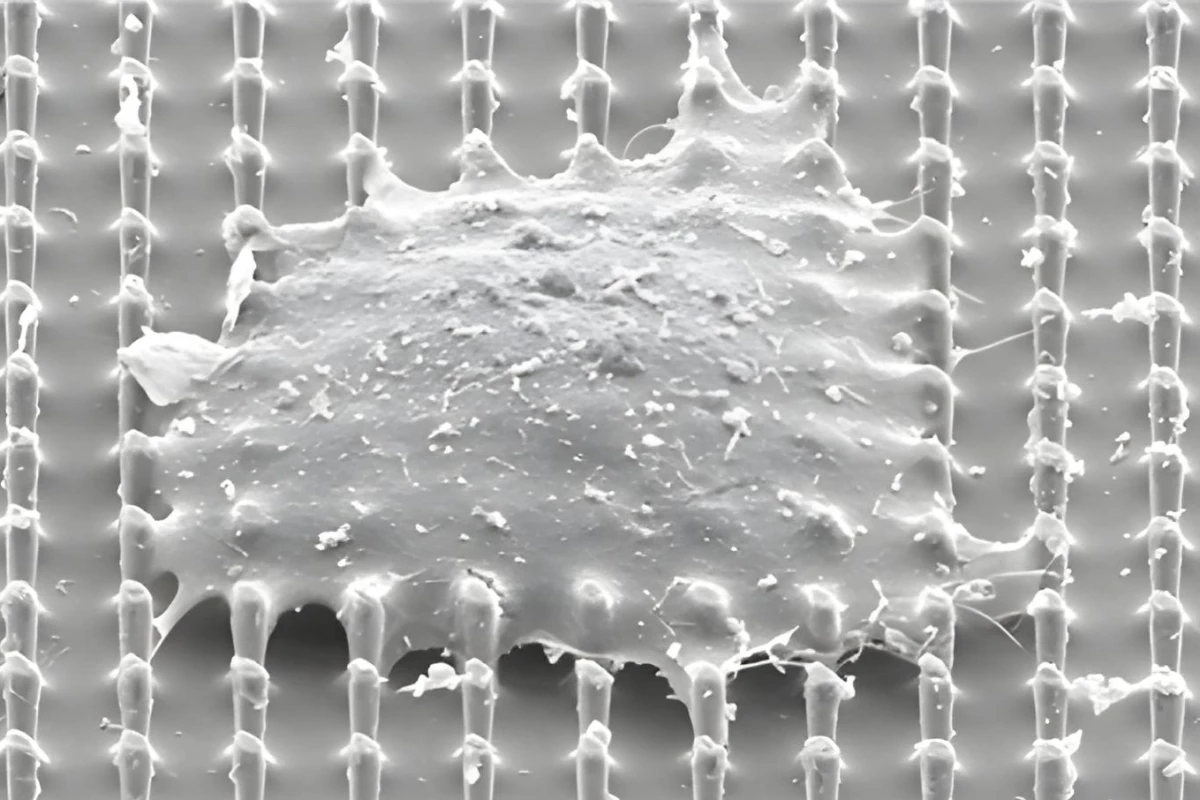In a move akin to puncturing an egg yolk without breaking the shell or egg white, researchers have figured out how to pierce the nucleus of a cell without hurting the rest of the structure. The breakthrough could be big news for medical treatments.
To achieve this medical magic trick, researchers at the University of San Diego created an array of nanopillars which looks something like a microscopic bed of blunt nails. They then placed a variety of cells treated with a fluorescent dye on top of the pillars and watched what happened. The cells included heart muscle cells, skin cells, and fibroblasts, cells involved in developing connective tissue in our bodies.
All of the cells settled down around the pillars, which caused their nuclei to curve. This caused openings to form in the nuclear membrane but not in the exterior cellular structure as witnessed by the appearance of the dye from the nuclei showing up in the cell's cytoplasm. The openings in the nuclear membrane were self-healing and repaired themselves once removed from the array.
“This is exciting because we can selectively create these tiny breaches in the nuclear membrane to access the nucleus directly, while leaving the rest of the cell intact,” said Zeinab Jahed, senior author of the study.

That's not an easy task to accomplish because the nuclear membrane is a notoriously tough shield that protects our genetic code. It can usually only be penetrated by certain molecules or by a needle that runs the risk of damaging the entire cell. Having a non-destructive way to open cellular nuclei can go a long way toward advancing gene therapy or sorting out ways to deliver drugs directly into the hearts of our cells.
Jahed and her team are now investigating their findings more closely to better understand the mechanics involved and how they could be exploited to improve medical interventions. “Understanding these details will be key to optimizing the platform for clinical use and ensuring that it is both safe and effective for delivering genetic material into the nucleus,” she said.
The study has been published in the journal Advanced Functional Materials.
Source: UC San Diego





